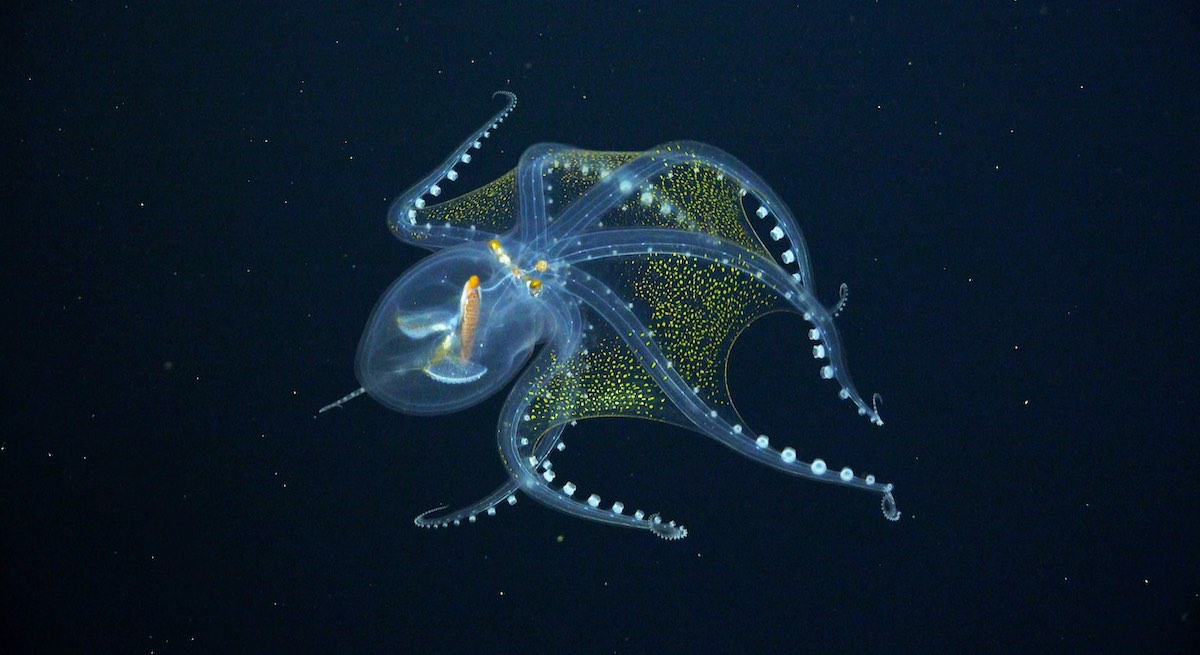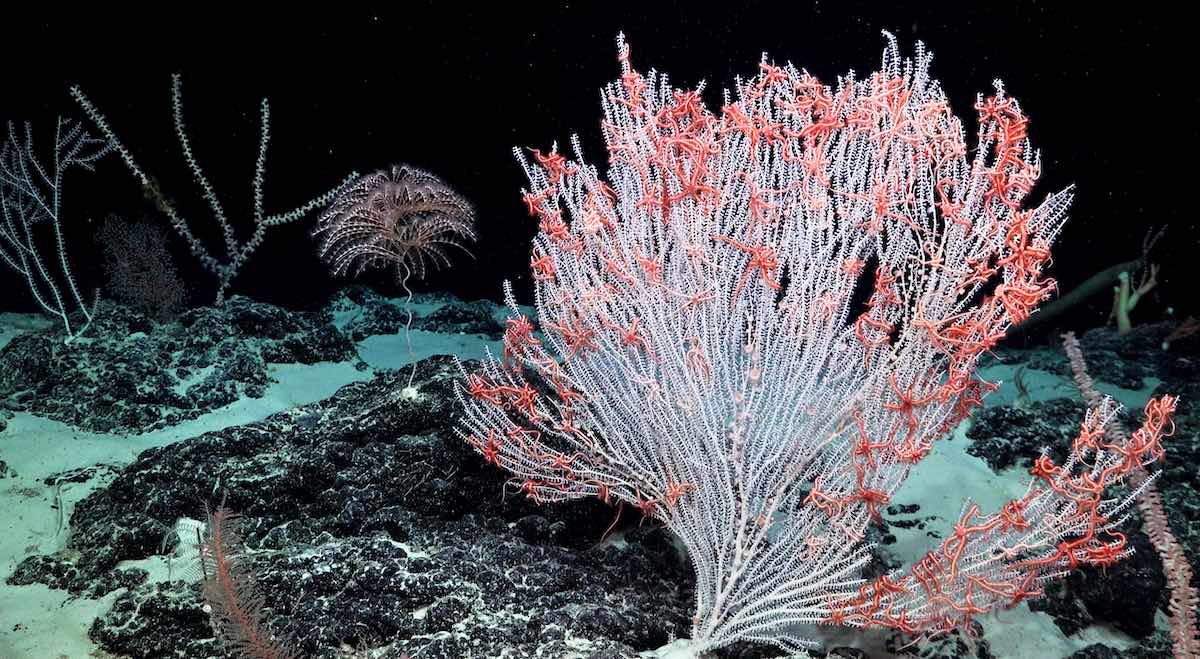The Glass Octopus is See-Through and Spectacular
The glass octopus is a clear-ly cool cephalopod

Need a reminder that our ocean is full of unusual animals? Look no further than the glass octopus.
The glass octopus (Vitreledonella richardi) is a very rarely seen cephalopod found in tropical and subtropical waters around the world. The species gets its name from its nearly-transparent body—you can see straight through to the optic nerve, eyes and digestive tract. These octopuses mostly live in the aphotic zone, meaning deep waters where sunlight doesn’t reach, at around 3,000 feet. They can grow to about 1.5 feet long and are estimated to live about 2-5 years.
The glass octopus lives in deep, hard-to-reach places, so there is much we don’t know about this translucent and luminescent cephalopod. So far, there have only been a few sightings and a few specimens recovered from the gut contents of their predators.
We now have new close-up footage of a glass octopus in the wild, thanks to a recent expedition in the U.S. Pacific Remote Islands Marine National Monument. The Schmidt Ocean Institute led the 34-day trip that brought scientists together from around the world to document sea creatures on deep seamounts. They also used high-resolution mapping tools to map more than 11,500 square miles of sea floor.
Using a remotely operated vehicle (ROV) named SuBastian, scientists observed not one but two glass octopuses, adding greatly to our knowledge of the behavior of this elusive species. “Looking into these deep-sea communities has altered the way we think about how organisms live and interact on seamounts and how they maintain diversity of life in the deep ocean,” said Dr. Tim Shank, a biologist at Woods Hole Oceanographic Institution, in a statement regarding the mission.
The glass octopus is considered one of the least studied cephalopods in our ocean. Each additional sighting or specimen helps us better understand this elusive species and how they might respond to a changing ocean.
Glass octopuses weren’t the only star of the mission, however! Scientists also captured footage of whale sharks stealing food from each other, documented deep-sea coral predators and collected samples that might help us understand adaptive immunity, which could have applications to cancer therapy and drug delivery.
This recent expedition is a reminder of how much we have left to discover. Read more about the mission here.
